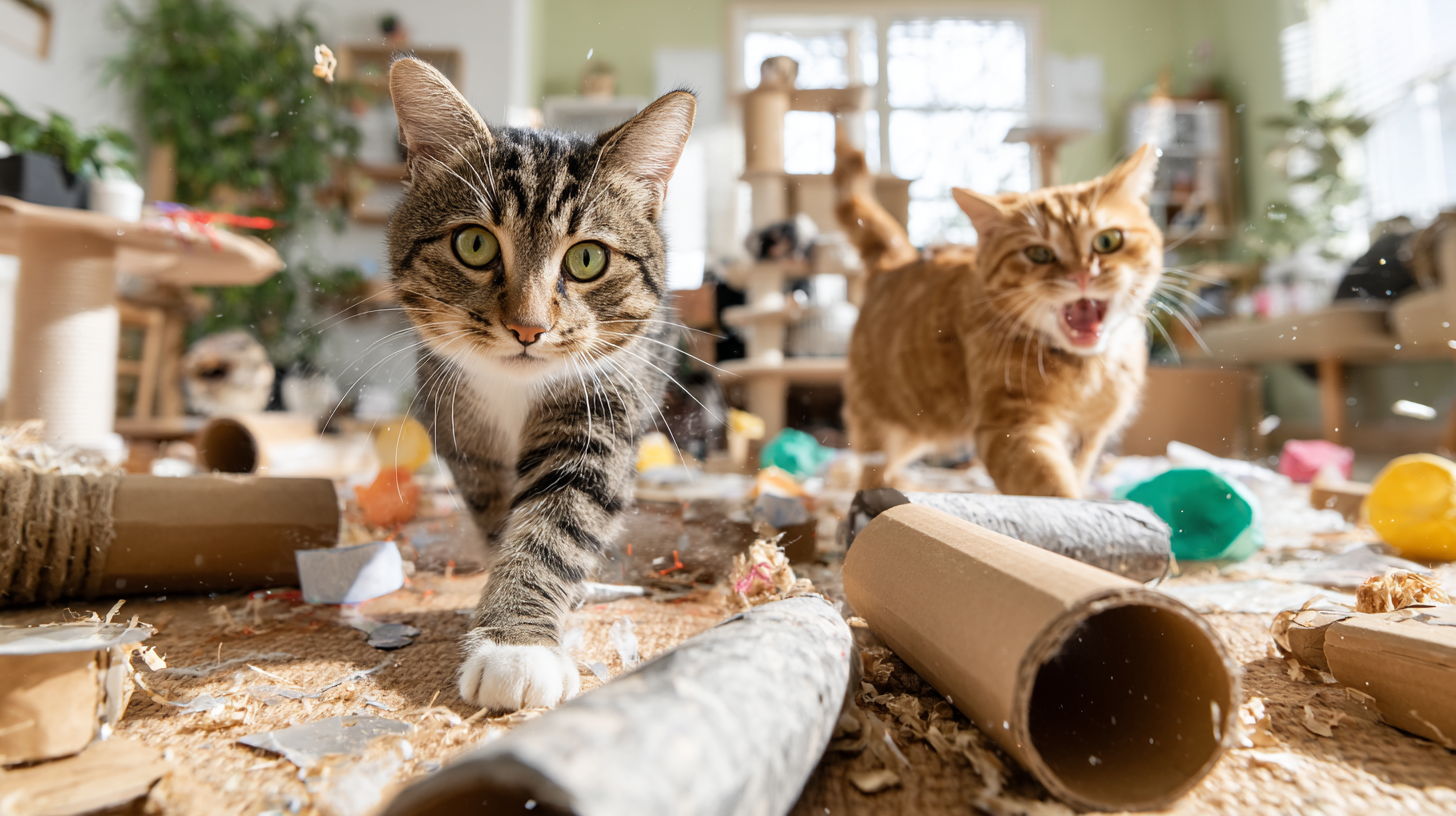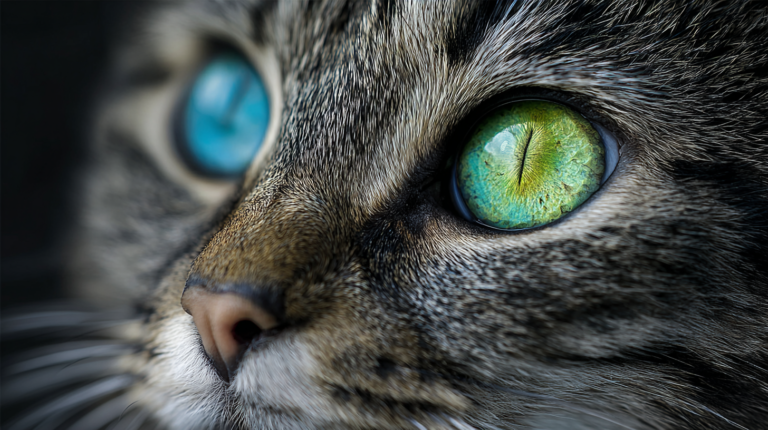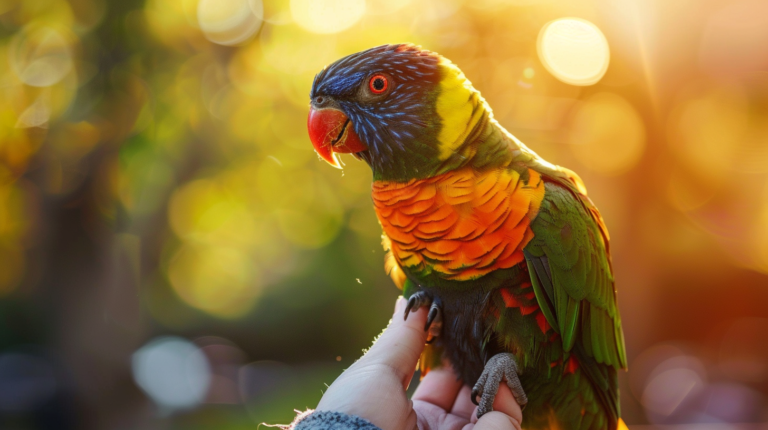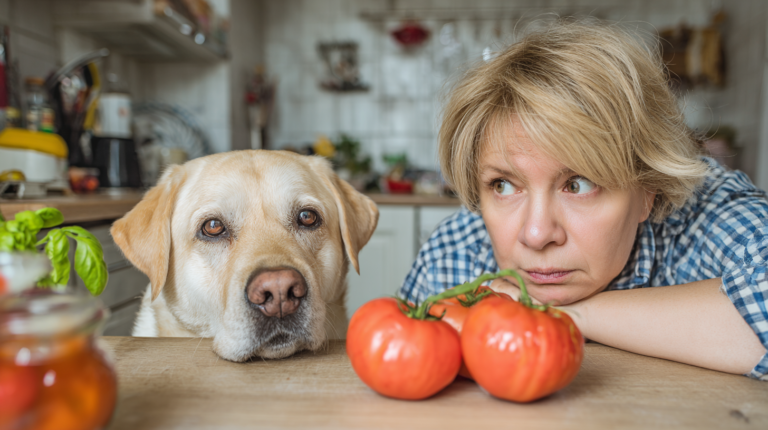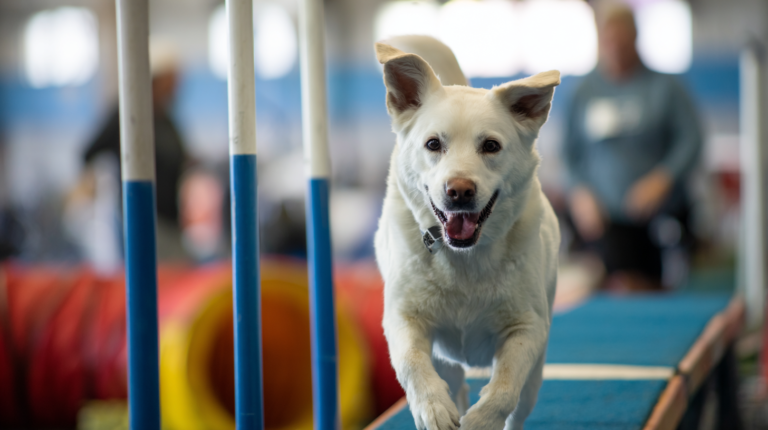Discover how to make 6 engaging homemade cat toys using recyclables! Save money while providing eco-friendly enrichment for your feline friend. DIY cat toy guide with step-by-step instructions.
Table of Contents
Introduction: Why Homemade Cat Toys Are Worth Your Time
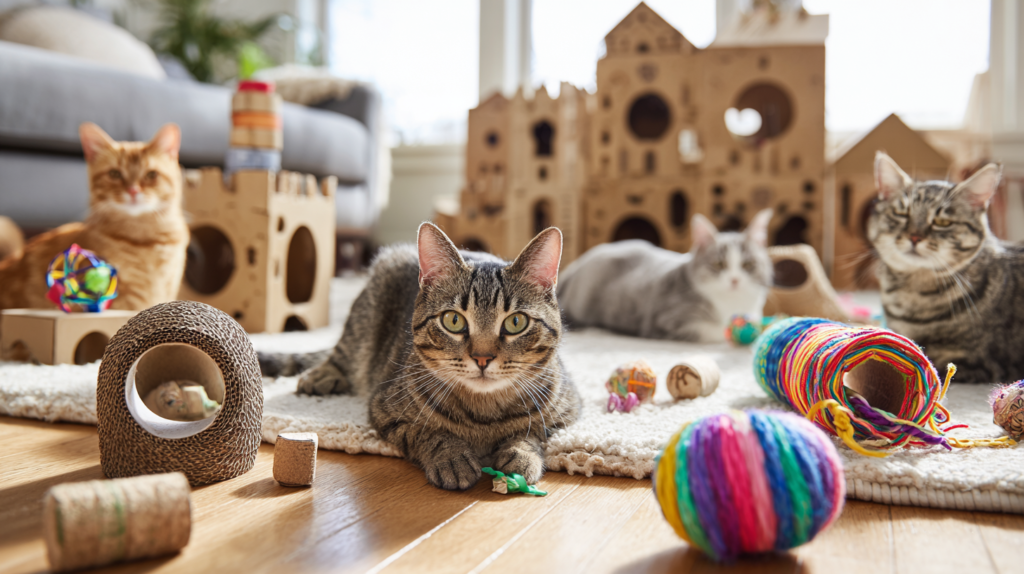
Every cat parent knows the scenario: you purchase an expensive, store-bought toy for your feline friend, only to find them more interested in the packaging it came in. Cats are notoriously picky when it comes to toys, often preferring simple household items over elaborate commercial options. This is where homemade cat toys come into play—specifically those created from recyclable materials you already have at home.
Creating homemade cat toys from recyclables isn’t just economical; it’s also environmentally responsible and offers a creative outlet for pet owners. According to a 2023 study by the American Pet Products Association, the average cat owner spends approximately $56 annually on toys alone. By repurposing items destined for the recycling bin, you can save money while reducing waste and providing stimulating entertainment for your curious companion.
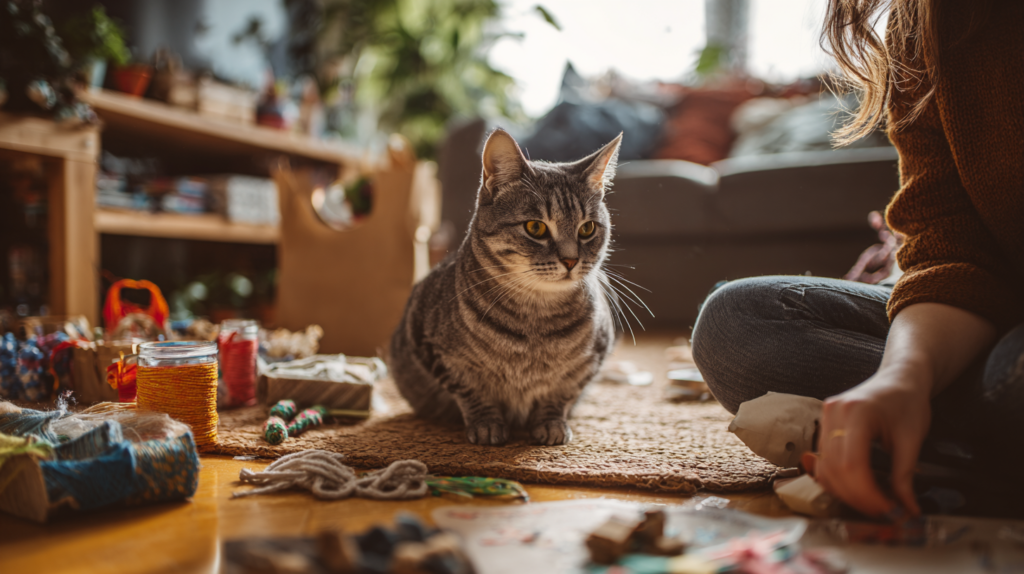
In this comprehensive guide, we’ll walk you through six fantastic homemade cat toys made from common recyclable household items. These DIY projects are simple enough for crafters of all skill levels, requiring minimal tools and materials. Beyond providing step-by-step instructions, we’ll explain why cats find these toys so appealing and how each one caters to different aspects of feline instincts.
Let’s transform your recycling pile into a treasure trove of engaging and environmentally friendly entertainment for your cat!
Why Commercial Cat Toys Aren’t Always Best
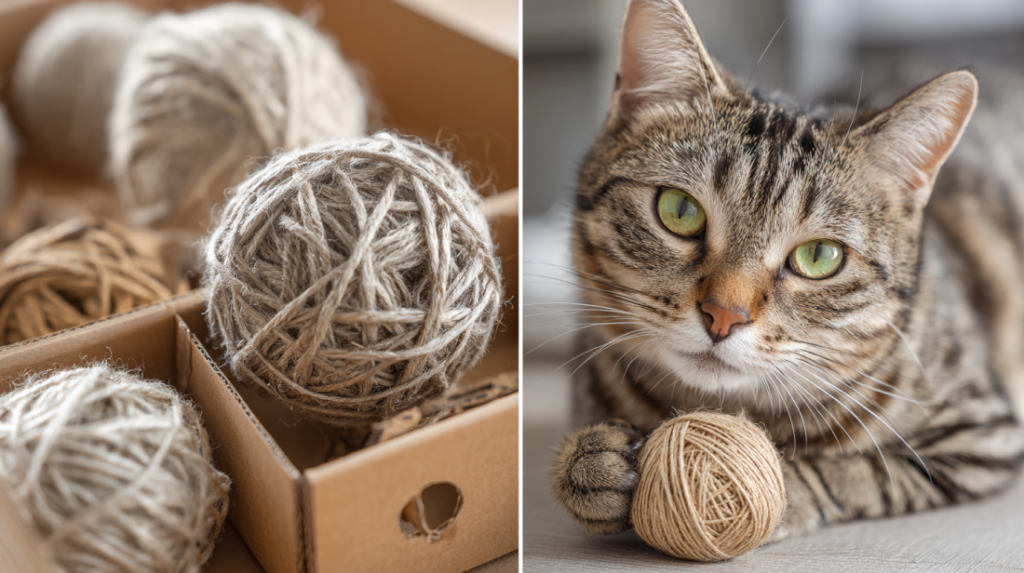
Before diving into our DIY projects, it’s worth understanding why store-bought toys sometimes miss the mark. Commercial cat toys certainly have their place, but they often come with several drawbacks:
Cost vs. Play Value
The pet toy industry is booming—valued at over $4.5 billion in 2024, according to Pet Industry Market Outlook. Yet many cat owners report that expensive toys often gather dust while their cats play with bottle caps, crumpled paper, or empty boxes. The disconnection between price and play value is striking.
Environmental Impact
Traditional pet toys contribute to environmental waste through manufacturing processes, packaging, and eventual disposal. Many contain non-biodegradable materials like certain plastics that will remain in landfills for hundreds of years.
Safety Concerns
Some commercial toys contain materials or small parts that could be harmful if ingested. Dr. Sarah Johnson, veterinarian and founder of Feline Health Initiative, notes: “I’ve removed more pieces of commercial toy parts from cats’ digestive tracts than I care to count. Homemade options, when created with safety in mind, can actually be safer alternatives.”
Limited Customization
Every cat has unique preferences. Store-bought toys don’t account for your specific cat’s play style, preferences, and personality. Homemade options allow you to customize based on what you know your cat enjoys.
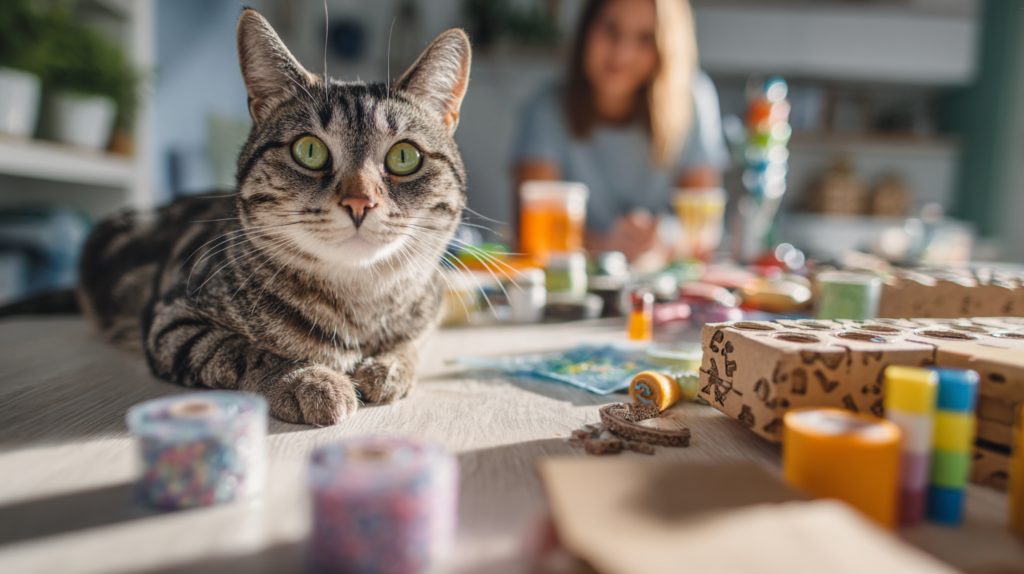
Benefits of Creating Homemade Cat Toys
Making homemade cat toys offers numerous advantages for both you and your feline companion:
Environmental Benefits
- Reduces landfill waste: According to the Environmental Protection Agency, the average American produces about 4.9 pounds of waste daily. Repurposing items for pet toys keeps materials out of landfills.
- Minimizes consumption: Creating toys from existing materials reduces the demand for new products.
- Teaches sustainability: Making homemade cat toys can be a family activity that demonstrates eco-friendly practices to children.
Financial Advantages
- Cost-effective: Using materials already in your home means virtually zero additional expense.
- Value maximization: You extract more utility from items you’ve already purchased.
- Reduced impulse purchases: With a steady supply of homemade options, you’ll be less tempted by commercial toys in pet stores.
Bonding Opportunities
Creating toys for your cat strengthens your bond in multiple ways:
- Custom design: You know your cat better than anyone—their preferences, play style, and quirks. Homemade toys can be tailored specifically to what engages them.
- Scent transfer: As you handle materials, your scent transfers to the toy, making it more appealing to your cat.
- Quality time: The creation process itself can be enjoyable, and observing your cat enjoying something you made brings its own satisfaction.
Cognitive Benefits for Cats
Homemade cat toys often excel at addressing cats’ natural instincts:
- Hunting simulation: Many DIY toys better mimic the movement and unpredictability of prey.
- Problem-solving opportunities: Toys with treats inside or complex movements encourage mental stimulation.
- Variety: It’s easier to rotate a collection of homemade toys, keeping your cat’s environment fresh and engaging.
According to feline behaviorist Dr. Emily Matthews: “Environmental enrichment through varied play opportunities is crucial for indoor cats’ mental health. Homemade toys often present unique challenges that commercial toys don’t replicate, encouraging cats to use problem-solving skills they’d naturally employ in the wild.”
Now that we understand why homemade cat toys are worthwhile, let’s explore six fantastic DIY options using recyclable materials!
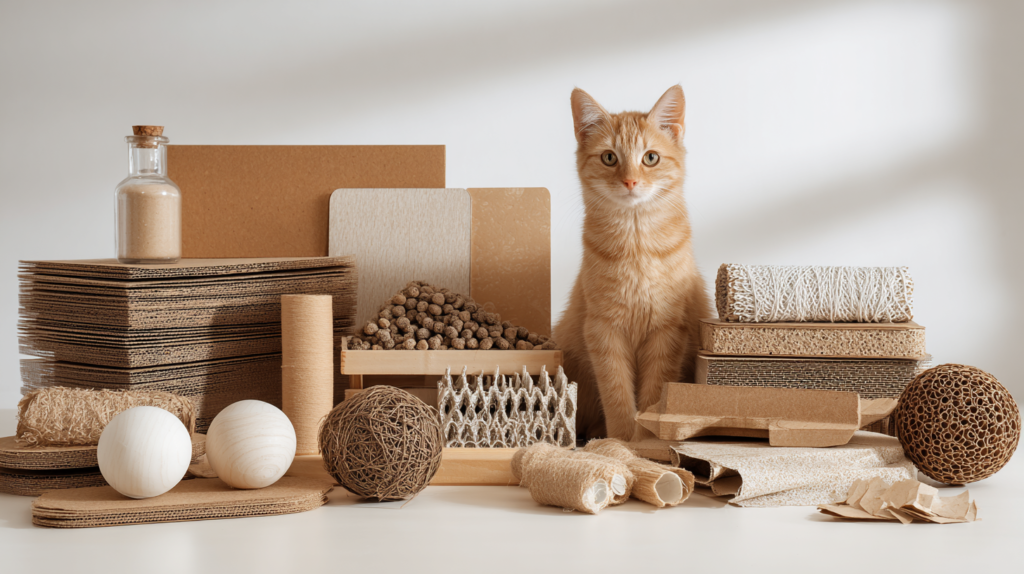
Essential Safety Guidelines for Homemade Cat Toys
Before crafting any homemade cat toys, prioritize these safety considerations:
- Avoid small, ingestible parts that could pose choking hazards
- Never use toxic materials (certain glues, paints, or essential oils)
- Remove potential hazards like string ends that could be swallowed
- Inspect toys regularly for wear and tear
- Supervise play with new toys until you’re confident they’re safe
- Discard damaged toys immediately to prevent injury
Dr. Michael Rivera, DVM and author of “The Complete Cat Health Guide,” emphasizes: “The best homemade cat toys prioritize safety first. If you’re ever in doubt about a material’s safety, err on the side of caution and choose an alternative.”
6 Fantastic Homemade Cat Toys Using Recyclables
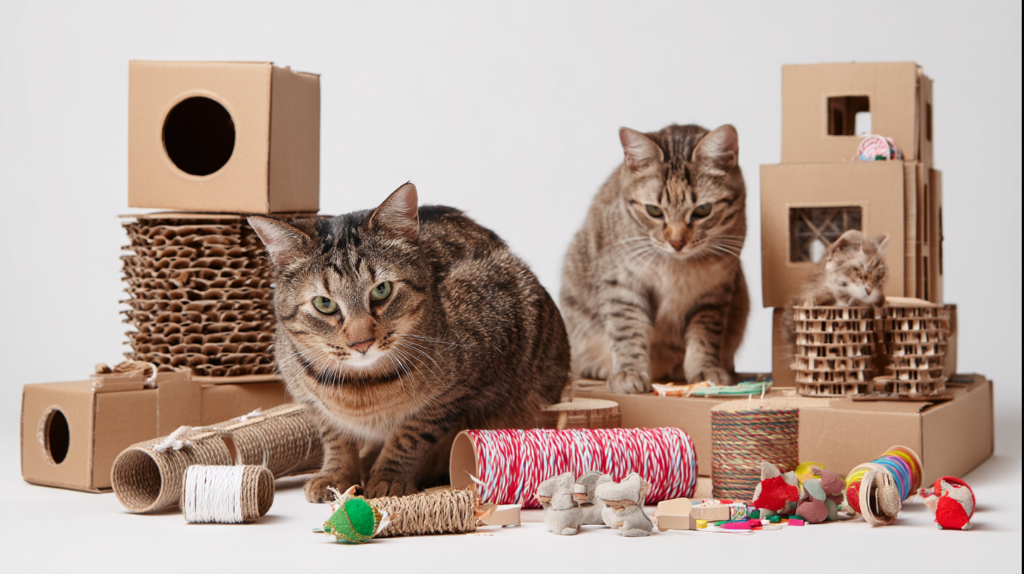
1. Toilet Paper Roll Puzzle Feeder

Materials Needed:
- Empty toilet paper roll
- Scissors
- Cat treats or dry food
Instructions:
- Take an empty toilet paper roll and ensure it’s clean and free of any residual paper.
- Fold in one end of the tube to create a partial closure.
- Place a few cat treats or pieces of dry food inside the tube.
- Fold in the other end partially, leaving small gaps where treats can fall out when batted around.
- Optional: Cut small holes along the sides of the tube for additional treat-dispensing opportunities.
Why Cats Love It:
This simple homemade cat toy engages multiple feline instincts. The unpredictable movement of the tube combined with the sound and scent of treats inside triggers hunting behaviors. As cats bat, chase, and pounce on the tube, treats occasionally fall out, rewarding their play with a tasty surprise.
A 2022 study published in the Journal of Feline Medicine and Surgery found that food puzzle toys significantly reduced behavioral problems in indoor cats by providing mental stimulation that mimics natural foraging behaviors.
Safety Tips:
- Remove any sharp edges from the cardboard
- Ensure the tube isn’t small enough to fit entirely in your cat’s mouth
- Replace the toy when it becomes excessively tattered
2. Plastic Bottle Treat Dispenser
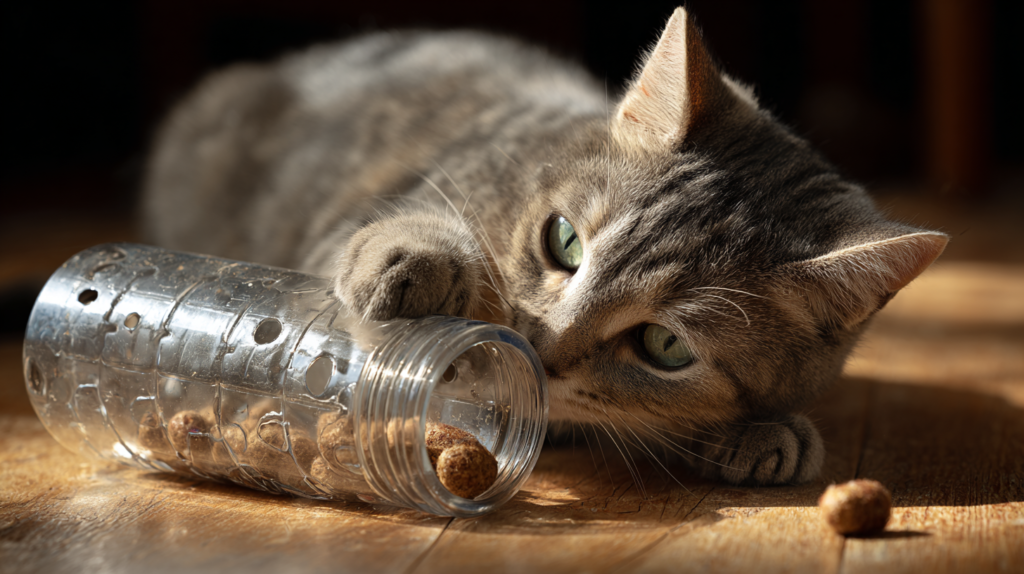
Materials Needed:
- Clean, empty plastic bottle (water or soda bottle)
- Scissors or craft knife
- Cat treats or dry food
Instructions:
- Clean and thoroughly dry a plastic bottle, removing any labels.
- Use scissors or a craft knife to cut several small holes in the sides of the bottle (approximately ½ inch in diameter).
- Place a small handful of treats or dry food inside the bottle.
- Secure the cap tightly.
Why Cats Love It:
This homemade cat toy challenges your cat’s problem-solving abilities while engaging their hunting instincts. Cats must figure out how to manipulate the bottle to make treats fall through the holes. The transparency of the bottle allows them to see (and hear) the treats inside, providing extra motivation.
Feline behavior consultant Jackson Galaxy notes: “Puzzle feeders are essential enrichment tools for indoor cats. They slow down feeding, provide mental stimulation, and help prevent behavior problems stemming from boredom.”
Safety Tips:
- Ensure all cut edges are smooth
- Make holes large enough for treats to fall out but not so large that your cat could get their paw stuck
- Remove the plastic ring from the bottle neck
- Only use bottles with secure caps that can’t be chewed off
- Supervise play initially to ensure your cat doesn’t attempt to chew the plastic
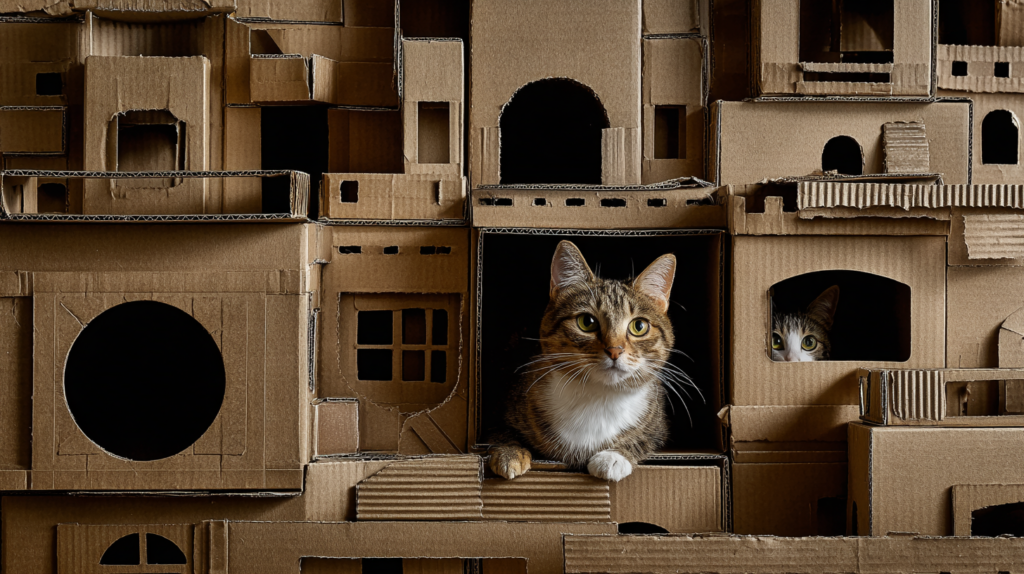
3. Cardboard Box Castle
Materials Needed:
- Various cardboard boxes
- Scissors or craft knife
- Non-toxic glue or tape
- Optional: Non-toxic paint for decoration
Instructions:
- Collect cardboard boxes of different sizes.
- Cut doorways, windows, and peek holes in the boxes.
- Create connections between boxes by aligning cutout doorways.
- Secure boxes together using tape or non-toxic glue.
- For added interest, create multiple levels by stacking boxes securely.
- Optional: Decorate with non-toxic paint if desired.
Why Cats Love It:
Cardboard box castles tap into cats’ natural affinity for enclosed spaces. According to a 2022 survey by the International Cat Association, 98% of cat owners reported their cats showing interest in boxes. These homemade cat toys offer security, observation points, and opportunities for ambush play—all behaviors rooted in cats’ evolutionary history as both predators and prey.
Dr. Leslie Sinn, certified veterinary behaviorist, explains: “Boxes provide thermal insulation, stress reduction, and a sense of security. When we transform them into interconnected play structures, we’re creating an enrichment masterpiece for our cats.”
Safety Tips:
- Ensure there are no staples, sharp edges, or loose tape
- Make sure the structure is stable and won’t collapse during play
- Avoid toxic glues or paints
- Replace when the cardboard becomes soiled or damaged
4. T-Shirt Rope Toy
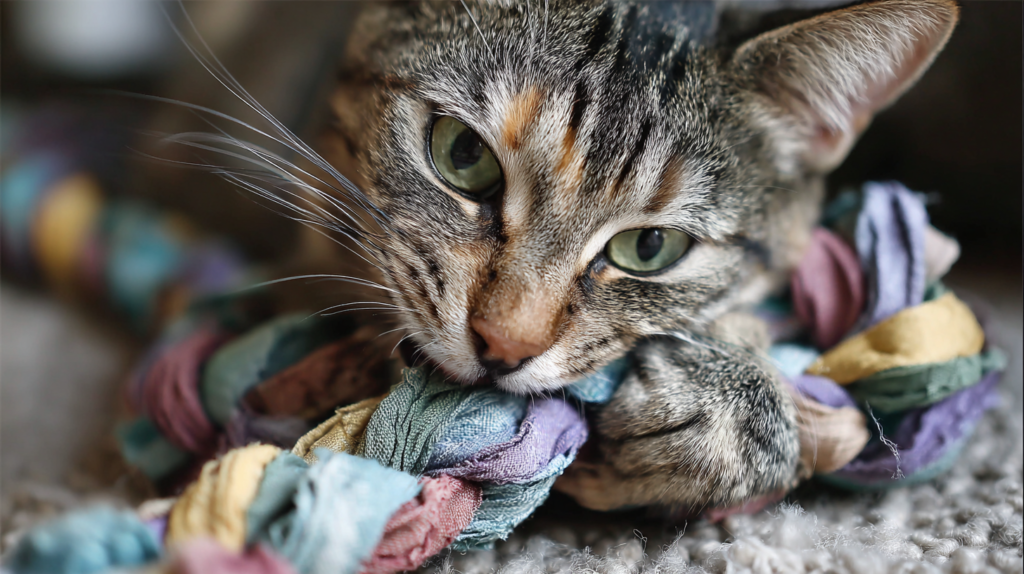
Materials Needed:
- Old t-shirt or other cotton fabric
- Scissors
Instructions:
- Cut an old t-shirt into 6-8 long strips, approximately 1-2 inches wide.
- Stretch the strips slightly to cause them to curl.
- Gather the strips and tie a knot at one end.
- Separate the strips into three groups and braid them tightly.
- Tie off the end with another knot.
- Optional: Create multiple braids and tie them together for a more complex toy.
Why Cats Love It:
These homemade cat toys are perfect for interactive play sessions. The fabric maintains your scent, making it more appealing to your cat. The texture is ideal for gripping with claws and teeth, and the braided design creates interesting movement during play. T-shirt rope toys are particularly good for cats who enjoy “bunny kicking” their toys, as they can grab and kick against the length of the braid.
A 2023 study in Applied Animal Behaviour Science found that textile-based toys were preferred by 63% of cats compared to plastic or hard rubber alternatives, likely due to the more satisfying mouth feel and grippable texture.
Safety Tips:
- Don’t use fabrics with loose threads that could be ingested
- Ensure knots are secure to prevent unraveling
- Don’t leave string-like toys out for unsupervised play
- Replace when the toy begins to fray significantly
5. Paper Bag Tunnel System
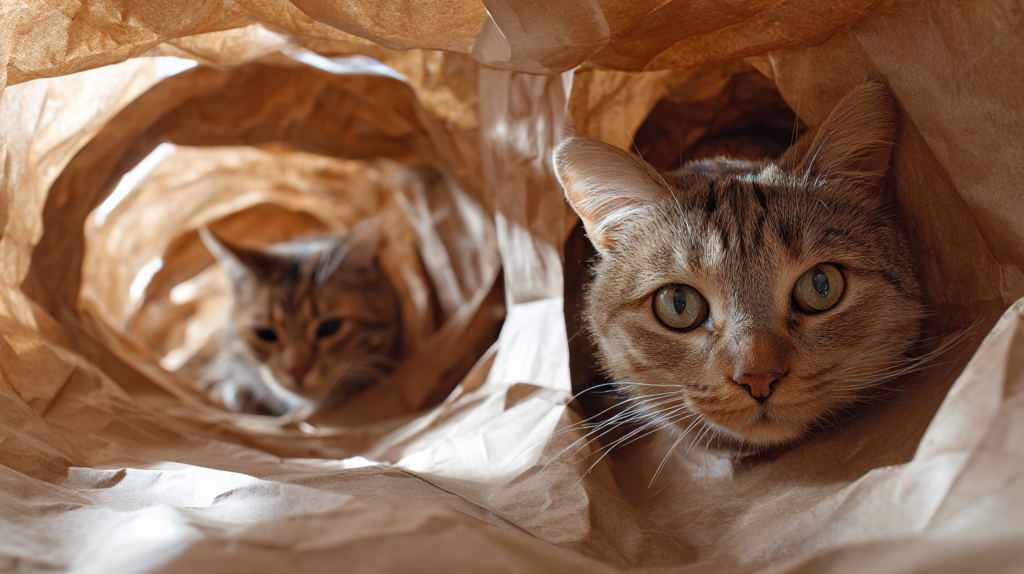
Materials Needed:
- Several paper grocery bags
- Scissors
- Tape or stapler
Instructions:
- Cut the bottom out of several paper bags.
- Cut circular openings in the sides of some bags to create side entrances.
- Arrange bags to form tunnels, with side openings creating junctions.
- Secure bags together using tape or staples (with staple ends folded over for safety).
- Leave one or two bags intact (without cutting the bottom) to serve as “rooms” at the end of tunnels.
Why Cats Love It:
Paper bag tunnels combine several elements cats naturally adore: crinkly sounds, hiding spaces, and surprise opportunities. These homemade cat toys simulate the experience of navigating tight spaces similar to what hunting cats might encounter in the wild. The rustling sound of the paper also mimics the sound of prey moving through underbrush, triggering hunting instincts.
Certified cat behaviorist Pam Johnson-Bennett notes: “Tunnel play allows cats to express predatory behaviors in a safe way. The ability to hide, stalk, and pounce from concealment satisfies deep-seated feline needs.”
Safety Tips:
- Remove any handles from paper bags to prevent strangulation hazards
- Ensure any stapled areas have the sharp ends properly folded over
- Keep away from open flames or heat sources
- Replace when bags become torn or dirty
6. Wine Cork Ball Toys

Materials Needed:
- Used wine corks
- Scissors
- Non-toxic glue
- Optional: Small feathers, catnip, or small bells
Instructions:
- Collect several wine corks (natural cork works best, but synthetic is acceptable).
- Optional: Carve small indentations in the cork and place a pinch of catnip inside.
- For enhanced appeal, attach small feathers using non-toxic glue.
- For auditory stimulation, carefully attach a small bell using strong, pet-safe glue.
- Create variations with different attachments to discover your cat’s preference.
Why Cats Love It:
Wine cork toys are lightweight, making them easy to bat around and chase. The natural cork material has an interesting texture for cats to explore with their paws and teeth. When enhanced with feathers, these homemade cat toys mimic the movement of small prey, triggering cats’ hunting instincts.
Research from the University of California’s School of Veterinary Medicine indicates that toys incorporating multiple sensory elements (texture, sound, scent) are more engaging to cats than single-sense toys. Wine cork toys can easily incorporate all three elements.
Safety Tips:
- Avoid using synthetic materials like polyethylene cork for cats who are aggressive chewers
- Ensure any attached elements (feathers, bells) are securely fastened
- Don’t use essential oils other than cat-safe catnip or silver vine
- Supervise play with smaller toys that could potentially be swallowed
How to Introduce Your Cat to New Homemade Toys
Even the best homemade cat toys might be met with initial indifference. Here’s how to increase the chances your DIY creations will be a hit:
Timing Matters
Introduce new toys when your cat is naturally active. For many cats, this means early morning or evening when their hunting instincts are heightened. According to the Cornell Feline Health Center, cats typically have two major daily activity periods corresponding to dawn and dusk, mirroring their natural hunting times in the wild.
Use Interactive Introduction
Don’t simply place the toy on the floor and walk away. Move it in ways that mimic prey movement—darting, hiding, peeking out—to trigger your cat’s predatory response. A 2021 study in the Journal of Veterinary Behavior found that owner-initiated play significantly increased cats’ interest in new toys.
Enhance Appeal with Scent
Consider applying cat-attracting scents to new toys:
- Catnip (effective for approximately 70% of cats)
- Silver vine (appealing to about 80% of cats, including many who don’t respond to catnip)
- Valerian root (attractive to some catnip-immune cats)
“Scent enrichment is powerful for cats,” explains feline behavioral specialist Dr. Mikel Delgado. “Their sense of smell is 14 times stronger than humans’, making scent-enhanced toys particularly engaging.”
Rotation System
Implement a toy rotation system to prevent boredom:
- Divide toys into 3-4 groups
- Make only one group available at a time
- Store away other groups in airtight containers
- Rotate toys weekly to maintain novelty
Research from the Animal Behavior Clinic at Tufts University shows that toy rotation significantly increases play engagement compared to constant availability of the same toys.
Tailoring Homemade Cat Toys to Your Cat’s Play Style
Not all cats play the same way. Observe your cat’s preferences to create homemade cat toys that match their play style:
For Air Hunters
Cats who leap, swat at elevated objects, and seem to prefer toys in motion above ground level.
Best homemade options:
- T-shirt toys attached to strings (supervised play only)
- Feathered cork toys
- Toilet paper roll toys with feathers attached
For Ground Hunters
Cats who stalk, pounce, and prefer chasing toys along the floor.
Best homemade options:
- Wine cork balls
- Crinkled paper balls
- Bottle cap sliders
For Ambush Predators
Cats who hide and pounce from concealment.
Best homemade options:
- Paper bag tunnels
- Cardboard box castles with peek holes
- Hide-and-seek puzzles with treats
For Food-Motivated Cats
Cats who respond strongly to treats and food rewards.
Best homemade options:
- Toilet paper roll treat dispensers
- Plastic bottle puzzle feeders
- Cardboard puzzle boxes with hidden treats
Dr. Tony Buffington, renowned veterinary nutritionist and cat behavior expert, notes: “Understanding your cat’s play preference isn’t just about entertainment—it’s about fulfilling their psychological needs and preventing behavior problems.”
When to Replace Your Homemade Cat Toys
Even the best homemade cat toys don’t last forever. Replace toys when you observe:
- Fraying or tearing that could result in ingestion of parts
- Visible dirt or grime that can’t be cleaned
- Structural damage that changes how the toy functions
- Diminished interest from your cat (may need cleaning or replacement)
- Mold or mildew (particularly on paper or cardboard items)
“Regular inspection of homemade toys is crucial,” advises Dr. Karen Becker, integrative veterinarian. “I recommend a weekly safety check for all cat toys, with special attention to those made from recyclable materials that may degrade more quickly than commercial alternatives.”
Combining Homemade and Commercial Toys for Optimal Enrichment
The ideal approach to cat toys often involves combining homemade cat toys with select commercial options. This strategy provides:
- Diverse play experiences that address different instincts
- Complementary materials with varying textures and sounds
- Balance between durability and novelty
- Cost-effective solutions that still fulfill specialized needs
According to a 2023 survey by the American Association of Feline Practitioners, households that provide both commercial and homemade enrichment options report fewer behavior problems than those relying exclusively on either approach.
| Toy Type | Best For | Replacement Frequency | Environmental Impact |
| Homemade Cardboard Toys | Scratching, hiding, exploring | 1-3 weeks | Low – recyclable |
| Homemade Fabric Toys | Bunny kicking, carrying, wrestling | 1-2 months | Low – upcycled |
| Commercial Catnip Toys | Scent stimulation, independent play | 2-3 months | Medium |
| Commercial Electronic Toys | Solo play, high energy needs | 6-12 months | High |
Beyond Toys: Creating a Complete Enrichment Environment
While homemade cat toys form an important part of your cat’s enrichment, they work best as part of a comprehensive approach to feline mental and physical stimulation:
Vertical Space
Combine your DIY toys with opportunities for climbing and perching. According to certified cat behavior consultant Marilyn Krieger, “Vertical territory is as important to cats as floor space, if not more so. It provides security, exercise, and observation opportunities.”
Easy DIY solutions:
- Secure shelving with non-slip surfaces
- Window perches from repurposed materials
- Cardboard climbing structures
Sensory Enrichment
Provide opportunities for varied sensory experiences:
- Visual: Window access with bird feeders outside
- Olfactory: Rotation of safe herbs like cat grass, catnip, and silver vine
- Tactile: Various surfaces for exploration (carpet scraps, cooling tiles, etc.)
- Auditory: Nature sounds or cat-specific music (studies show cats prefer species-specific music)
Cognitive Challenges
Supplement physical toys with mentally stimulating activities:
- Clicker training sessions
- Rotating puzzle feeders (both homemade and commercial)
- Hide-and-seek games with treats
Dr. Stephanie Borns-Weil, head of the Tufts Animal Behavior Clinic, emphasizes: “Environmental enrichment isn’t a luxury for indoor cats—it’s a necessity for their psychological wellbeing. Homemade toys and activities are often the most accessible way for owners to provide this essential stimulation.”
Involving Children in Creating Homemade Cat Toys
Creating homemade cat toys offers excellent opportunities for family bonding and teaching children about pet care, recycling, and creativity. Consider these age-appropriate projects:
For Young Children (3-6 years):
- Decorating paper bags for tunnels (with supervision)
- Helping stuff toilet paper rolls with treats
- Rolling and crumpling paper balls
For Older Children (7-12 years):
- Braiding t-shirt toys
- Basic cardboard construction projects
- Designing treat-dispensing challenges
For Teens:
- Complex cardboard architecture
- Electronic or mechanical adaptations of recycled items
- Documenting toy effectiveness and cat preferences
Child development specialist Dr. Rebecca Schrag Hershberg notes: “Crafting for pets teaches empathy, responsibility, and the value of creative problem-solving. Children learn to consider another being’s needs and preferences, which are foundational skills for emotional intelligence.”
Always emphasize safety—both for the child and the cat—during these collaborative projects.
FAQ Section: Homemade Cat Toys
Q: Are homemade cat toys safe for my cat?
A: Homemade cat toys can be very safe when properly designed with pet safety in mind. Always avoid small parts that could be swallowed, toxic materials, or designs that could entrap or injure your cat. Supervise play with new toys until you’re confident they’re safe, and inspect regularly for wear and tear. If you’re uncertain about a material’s safety, consult your veterinarian.
Q: My cat doesn’t seem interested in the homemade toys I’ve created. What can I do?
A: Try enhancing toys with catnip, silver vine, or valerian root to increase appeal. Introduce toys during your cat’s active periods (usually dawn and dusk) and use interactive play rather than simply placing toys on the floor. Different cats have different play preferences, so experiment with various styles—some prefer toys that move through the air, while others prefer ground-based toys they can stalk and pounce on.
Q: How often should I replace homemade cat toys?
A: Replacement frequency depends on the materials used and your cat’s play style. Paper-based toys typically need replacement every 1-3 weeks, while sturdier fabric or cork toys might last 1-2 months. Always replace toys that show signs of significant wear, damage, or soiling. Implementing a toy rotation system, where you cycle through different sets of toys weekly, helps maintain interest while extending the perceived lifespan of your collection.
Q: Can I use essential oils to scent homemade cat toys?
A: Most essential oils are NOT safe for cats. Their livers lack certain enzymes needed to metabolize the compounds in essential oils, which can lead to toxicity. Stick to cat-safe options like catnip, silver vine, or valerian root. Never use tea tree, citrus, pine, wintergreen, or other essential oils in products your cat might lick or chew, as these can cause serious health problems.
Q: How do I clean homemade cat toys?
A: Cleaning methods depend on materials. Fabric toys can often be machine washed on gentle cycles or hand washed with mild, pet-safe detergent. Hard plastic items can be washed with hot, soapy water and thoroughly rinsed. Paper and cardboard items generally cannot be cleaned effectively and should be replaced when soiled. Some toys, particularly those with catnip, may lose appeal after washing and might need scent refreshing.
Q: What recyclable materials should I avoid when making cat toys?
A: Avoid materials with sharp edges, toxic components, or small parts that could be swallowed. Specific items to avoid include: plastic bags that pose suffocation risks, items with strings or ribbons longer than 4 inches (strangulation hazard when unsupervised), materials containing adhesives or glues not labeled as pet-safe, items previously containing toxic substances, and materials treated with flame retardants or other chemicals.
Ready to Create Even More Enrichment for Your Cat?
For more expert pet care tips and product recommendations, visit BlithePet.com – your trusted source for pet wellness. Our team of veterinarians and pet behavior specialists regularly shares new ideas for environmental enrichment, nutrition advice, and health guidance for cats of all ages and personalities.
Conclusion:
A Sustainable Approach to Feline Happiness
Creating homemade cat toys from recyclables offers multiple benefits: environmental responsibility, cost savings, customization to your cat’s preferences, and stronger bonds between you and your feline companion. By understanding your cat’s natural instincts and play style, you can craft toys that provide both physical exercise and mental stimulation—essential elements for a happy, healthy indoor cat.
Remember that the most successful approach to cat enrichment combines various types of toys and activities, rotated regularly to maintain interest. Regular observation of your cat’s preferences allows you to refine your offerings over time, creating an ever-evolving enrichment program perfectly tailored to your unique companion.
Have you created homemade cat toys that were particularly successful with your cat? Share your experiences in the comments below! Your creative ideas might inspire other cat parents in our community to try something new.

